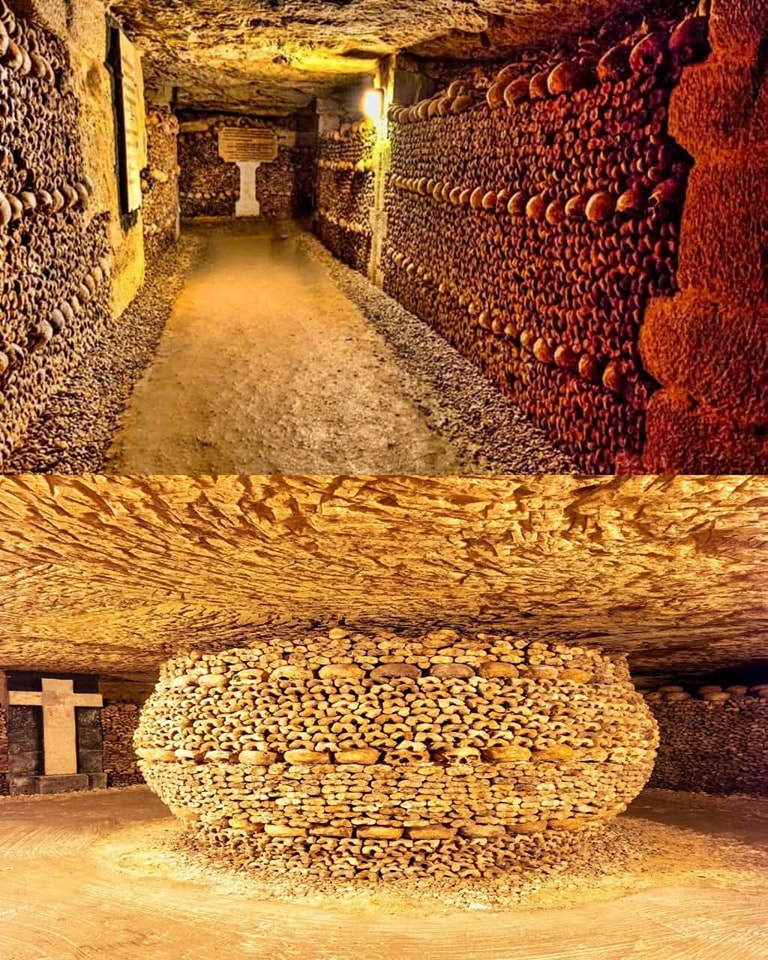Beneath the charming cobblestone streets and iconic boulevards of Paris lies a hidden world, one that few have dared to explore in its entirety—a vast network of shadowy tunnels that crisscross beneath the city’s foundations. This mysterious subterranean realm, known as the Catacombs of Paris, holds within its winding corridors the silent echoes of millions of souls. More than just a macabre burial ground, the catacombs are a haunting reflection of Paris’s complex relationship with mortality, resistance, and art. They reveal a narrative of survival, innovation, and reverence for life and death, wrapped in a setting that is as eerie as it is captivating.

The origins of this underground ossuary date back to the late 18th century, a time when Paris was facing a severe public health crisis. The city’s cemeteries had become dangerously overcrowded, with burial grounds such as the notorious Les Innocents emitting foul odors and contaminating the surrounding air and water. Concerns mounted as decaying bodies, sometimes stacked in shallow graves, posed a growing threat to the living. The authorities were compelled to act decisively, seeking a solution that was both practical and effective.
Their answer came from an unexpected place—beneath the city itself. Paris had long relied on underground limestone quarries to supply building materials for its structures. These abandoned quarries, vast and sturdy, presented the perfect location for an unconventional cemetery. Beginning in 1786, bones from overflowing cemeteries were exhumed and methodically transferred to these underground chambers. The process, which continued for years, ultimately relocated the remains of approximately six million Parisians, carefully stacking their bones in intricate and respectful arrangements that would come to define the Catacombs of Paris.
Yet, this site quickly evolved beyond its functional purpose. The act of relocating so many remains became a monumental effort steeped in symbolism and emotion. The catacombs took on a solemn majesty, becoming a place where the living could reflect on the fragile boundary between life and death. As visitors descended into the dimly lit tunnels, they were met by rows upon rows of skulls and femurs, artfully arranged to both conserve space and evoke a sense of reverence.
Over time, the catacombs acquired layers of meaning far beyond their original function. During World War II, their significance deepened. As Nazi forces occupied Paris, the French Resistance found refuge in these dark tunnels. Navigating through narrow, twisting passageways, these brave fighters used the catacombs as secret hideouts and strategic routes, enabling them to move undetected beneath the feet of their occupiers. Here, among the silent witnesses of past generations, acts of resistance were planned, lives were saved, and history was shaped.
Ironically, even the Nazis recognized the catacombs’ strategic value, establishing their own bases within the tunnels. Thus, these subterranean passages became a contested space—simultaneously a symbol of oppression and defiance. The same walls that once bore only the quiet burden of the dead now whispered stories of courage, sacrifice, and the indomitable human spirit. The catacombs stood as a testament not just to mortality, but to resilience in the face of adversity.
Yet the catacombs were not solely a place of death and rebellion. In the 19th century, they became an unexpected venue for cultural expression. The unique acoustics of the chambers, combined with their otherworldly atmosphere, attracted musicians, poets, and artists. Concerts were held deep within the catacombs, where melodies echoed through halls lined with human remains, turning the macabre into the sublime. These events challenged societal norms, transforming a burial ground into a space where art flourished in the presence of death. The fusion of the somber setting with vibrant cultural life underscored the catacombs’ role as a place of contrasts, where beauty and sorrow, life and death, coexist.
Today, only a small portion of this vast underground network is open to the public. Tourists from all over the world venture below to witness the carefully preserved ossuary, where neatly stacked bones tell silent stories of centuries past. Each skull and bone represents a life lived, a person who once walked the streets of Paris, who loved, struggled, and eventually passed into memory. As visitors wander through these corridors, they are invited to reflect on the passage of time, the inevitability of death, and the enduring spirit of a city that embraces its history, however dark or unsettling it may be.
What makes the Catacombs of Paris truly unique is their power to stir introspection. They force us to confront mortality in a setting that is neither sanitized nor abstract. Beneath the city’s romantic veneer lies this raw, unfiltered connection to the past. It’s a stark reminder that every city is layered with stories—some celebrated in daylight, others hidden in shadow. The catacombs offer more than a glimpse into death; they present an invitation to understand the city’s soul, to see Paris not just as a city of lights, but as a city of lives—millions of them, remembered in stone and silence.
In their stillness, the catacombs continue to evolve, drawing new meaning with each passing generation. They are a place of history, art, resistance, and memory—a subterranean archive of human experience. For those willing to step into the depths, the catacombs offer not just a tour of bones, but a profound journey into the heart of Paris’s identity. Here, beneath the surface, we find that the stories of the dead continue to speak, reminding us of our own place in the ongoing narrative of life.





